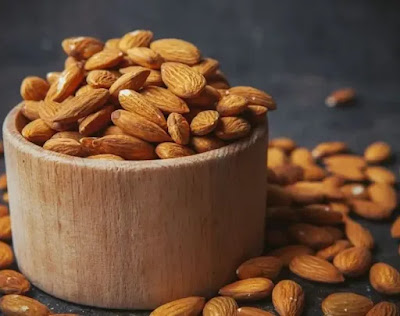How to meal prep for the week?
How to meal prep for the week?
Planning your meals for the week is perhaps one of the greatest weapons against the odds of time, wallet, and stress. Below are some of the advantages of preparing your meals in advance which involve saving on personal time,being in a position to prepare healthier meals,preventing food wastage and increasing on time management. Here is a detailed procedure on how to meal prep for a week.
1. Plan Your Meals
Then the best way to approach managing your diet is to plan what meals you will be taking each day of the week. This comprises of planning what you will take for breakfast, lunch, dinner, and the snacks in between. Think about what you want to eat, you are enjoying, any foods that are restricted by your physical conditions or your choice of diet. Design a level playing field that gives a comprehensive coverage of protein foods, vegetables, fruits and whole grain foods.
Tip: Meal planning can be done online using an app or even on a piece of paper or the use of a basic excel sheet. This will assist you in tracking the goods you have to purchase and ensure you are on track.
2. Create a Shopping List
Based on the proposed meal plan, produce a list of consumables that you will need to buy. Divide foods by group such as; vegetables and fruits, meats, grains, and items that can be stored in the pantry. Before going to the store, you should take a quick look in your pantry and in the refrigerator so you don’t buy things you already have.
Tip: Don’t deviate from the list so as to avoid buying things you do not really need while at the same time ensuring you take everything that is on the list.
3. Shop Smart
Take the list with you to the grocery store. Select recent harvest products and look for the offers/buy one-get one free items, which are normally in large quantities. It is common for staple produce such as grains and beans to be bought in large quantities as this proves cheaper.
Tip: Another thought is to buy different products either at another store or a better, higher quality item in a store that one commonly shops in. For instance, a farmer market could have fresh products than a supermarket while on the other hand a warehouse store could have cheap goods because they are bought in large amounts.
4. Prep Ingredients
As soon as you get home start cutting your ingredients so that they will be ready as soon as you start cooking. Wash, peel and chop we vegetables and fruits and pack them in a sealable plastic bags or containers. Pre-treat proteins or cook proteins en-mass. For instance, preparing vegetables, fish, or meat on the grill or in the oven in large portions such as chicken breasts, tofu, or beans and served in different meals is a good strategy.
Tip: Refrigerate the cooked proteins and grains properly by using containers which are safe for freezer to maintain the food freshness. It is recommended that servings be measured for convenience as shown below.
5. Cook in Batches
Refactoring is another factor that is usually embraced when preparing meals for consumption in the future. Order massive portions of staples like grains (rice, quinoa), proteins: meats (chicken, beef), and vegetable: (broccoli, carrots). In turn, it is recommended to cook applying several techniques at once: oven-baked vegetables accompanied by stovetop-cooked grains.
Tip: Organize meals with helping devices like slow cooker, pressure cooker, air fryer etc to reduce the cooking time.
6. Assemble Meals
After that, you need to prepare your meals; ideally this is done with your ingredients once they are well cooked and cooled down. It’s preferred that the containers are in sizes corresponding to the portions that you eat. Lunches should also be portioned in single servings such as putting food in lunch boxes or lunch bags. For dinners, larger containers could come more in handy in this aspect, that is depending on the quantity of food.
Tip: Prefer the glass containers with the lids for more extended food storage and to reduce the possibility of acquiring terminal stains or smells that tend to infuse the plastic.
7. Label and Store
Write the date and the food that is contained in the parcel on each of the containers. This assists in determining the freshness of the meals as well as enabling quick location of a particular meal. For shorter periods of meals consumption, it is recommended to store them in the refrigerator; for longer periods – in the freezer.
Tip: Maintain a meals database on the exterior of the refrigerator or in your meal planning software chart so that you do not forget of what you have prepared.
8. Reheat Properly
Meal times require that foods are reheated properly to enhance their taste and also new safety standards encourage reheating of food as well. Microwave meals should be heated to uniformity and where this is not possible they should be stirred to heat properly. In this type of reheating the meals should be covered in order to avoid their drying up. Food should always be properly reheated to a temperature of 165°F (74°C) or above to destroy all bacteria.
Tip: For often reheating of the meals, it is advisable to use microwave safe or oven safe containers.
9. Adjust as Needed
It is important to know that due to the countless varieties, meal prepping is not a one formula solution. As time passes, one will work out ways on how to perform the method in accordance with the timetable and diet. If you find week one difficult, then don’t hesitate to change a recipe or a technique that you learned you could not do well at for the next week.
Tip: Also maintain a record of which meals were successful and which were not, to have a record and work on improving the meal prepping.
Conclusion
Eating has been brought up as a serious issue when one want to diet in a week and through meal prepping, one can enhance their eating journey and make their week efficient. Through planning, shopping, preparing and storing good foods, you are always assure of good foods in good condition whenever you need them. As people engage in the technique, they find it easier to incorporate it into the everyday schedule, as it leads to improved health and well-ordered life.




Comments